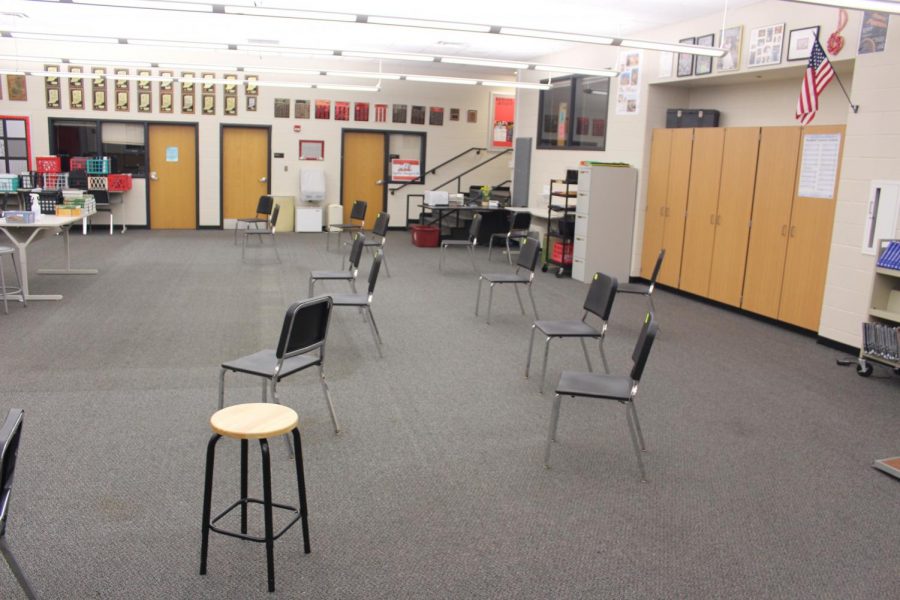Art classes prove to be challenging with hybrid learning
February 7, 2021
Last year, a student looked forward to heading to band or orchestra, socializing while playing an instrument they loved. This year, that same student might be sitting home, alone in their bedroom with their tuba.
While each class presents its own challenges in the hybrid learning model, arts can be especially difficult.
Performing Arts
“Band is typically a group collaboration, working together rather than individually,” sophomore Kylie Robinson said. “When we’re virtual, that collaboration is taken away. We’re all separated in our own places with no way to play together like we would normally do. This has caused us some complications on exactly how virtual band is gonna work.”
In a performing arts class, students are typically working together in preparation for a performance. With hybrid schedule and social distancing, students are unable to collaborate and may not even have an opportunity to showcase their hard work.
Junior Michael Mingus is involved with theatre and choir, and attends school in person four days.
“There’s an element of choir where you have to hear other people singing so you can match your voice, so you can match their tone,” Mingus said. “When it’s just you singing, and you can’t hear anyone else singing, it takes an aspect of choir totally out. When you’re in-person with everyone, it makes it ten times harder to blend and to have the tone. You’re also missing half of the people when you’re actually in class.”
Mingus and Robinson say they find these classes harder.
“For theatre, you have to see your face, you have to use your body, and you have to use other people to interact with,” Mingus said. “It’s impossible to do from a camera. Usually in classes, there’s a lot of collaboration, you usually work one on one with people, or you do a lot of group scene work, and it’s very like a whole class, especially in advanced acting, we usually do little plays in there. And now, we can’t do that. We’re forced to read through little scenes and stuff and you’re forced to interact with a screen instead of a person. That makes it very, very difficult.”
The inclusion of a performing arts class in their schedules influenced Mingus and Robinson in opposite ways.
“With the new uprise in [COVID] cases, I knew it would be safest to stay home the second semester,” Robinson said. “Band really isn’t prepared to defend against COVID, especially since we need our masks off to play. That would have been the most risky class to attend in terms of COVID, and it ultimately aided me into my decision of being fully virtual.”
Mingus says he chose to attend school on all four allowed days, saying he “cannot learn virtually.”
Visual Arts
Just like performing arts, the visual arts, such as painting and ceramics, are also affected.
“Ceramics is hard to do virtual because you don’t get the help and instruction that you would get when you are in person,” sophomore Sarah Chapman said.
This is not Chapman’s first year in an art class, but she said it is more difficult than last year. Ceramics, along with other classes, also includes material pickup – where a student would come to door one to pick up supplies to use during classes on virtual days.
“Ceramics is more difficult and unique than my other classes because I have to set time aside to work with the clay and time to bring my projects into the building,” Chapman said. “I brought home my materials from school on one of the first days.”
Chapman attends in-person school all four days however said that ceramics did not affect the decision.


